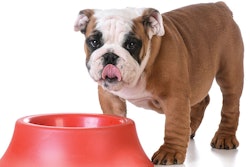
Connecticut-based company Watson Inc. has published a forecast in the 2018 Pet Foods Trend Guide, which predicts the human food trends that are most likely to transition into pet food. The forecast explains how pet food manufacturers may translate these trends into products pet-owners will want to buy.
Watson specializes in supplying custom nutrient premixes and ingredients for the food industry, so the company has a strong grasp on the leading recent trends in human food.
Identifying emerging trends in the pet food industry can be challenging. The pet food industry often follows trends similar to that of the food industry, a logical sequence since many pets are more and more considered a vital part of the family.
Human food trends transitioning into pet food
Preventative foods or condition-specific foods are one of the trends discussed in the guide. “Many Americans already look for foods that provide desired health benefits, for example, foods that address weight management, digestive health, heart health, and joint or bone health,” said Moira Watson, vice president of marketing and communications at Watson. “Consumers look for foods that they believe are beneficial to maintain health or prevent disease, so it is a natural step for pet parents to do something similar for their pets,”
Other trends discussed in the 2018 Pet Food Trends Guide include DIY pet foods, semi-homemade meals, toppers, home meal kit delivery, grain-free, gluten-free and functional foods. It also looks at how the pet food industry is building trust through transparency and the growing importance of sustainability and clean label ingredients, and how social media trends like “unicorn” foods can also translate into mainstream pet treats.
Following the clean label trend in pet food
For pet food and its close sibling, human food, “clean label” has seemingly morphed, in just a few years, from fad to trend to all-encompassing consumer demand for full ingredient and product transparency. Though not clearly defined, understood or regulated, it’s here to stay, at least for a while.
Several pet food experts name clean labels and transparency in Lindsay Beaton’s annual trends outlook — no surprise considering the many times and ways they show up on human food trends lists. For example, Mintel placed “Full disclosure: consumers demand total transparency” at the top of its list, tying it to widespread consumer distrust stemming from the political and cultural climate in the US and other countries. (See https://goo.gl/hF2WHH.)
Atop its list, Innova Market Insights expanded clean label to “mindful choices.” Consumers now have a more holistic idea of what they want from food products: a healthy body plus peace of mind in terms of sustainability, environmental responsibility and ethical products, said LuAnn Williams, director of innovation. About 40 percent of US and UK consumers have increased consumption of what they consider healthy foods, she added, while global food product launches with ethical claims – animal welfare, humane raising, environmentally responsible and sustainable packaging – rose 44 percent annually from 2010 to 2016, despite any scientific or regulatory backing.

















